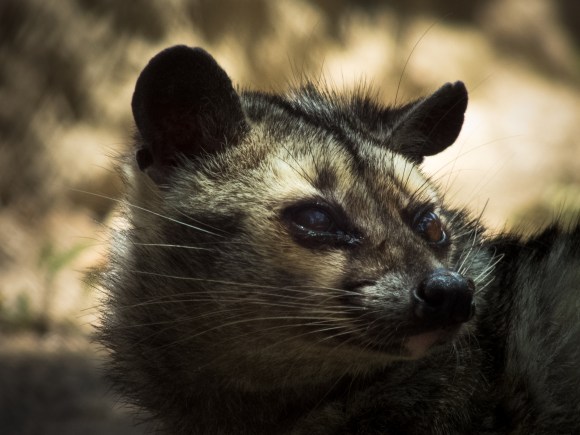
Human beings are endlessly inventive when it comes to food. From curried cicadas to snake soup to lemon and mint Pepsi, we never stop inventing new ways to follow the evolutionary imperative to stuff our faces with calories. And while I’m generally a cultural relativist when it comes to “weird” foods, sometimes there is a concept so out-there, you can’t help but say it’s bizarre.
Like kopi luwak, coffee made from beans that have been through the poop shoot of a tree cat. We’ve all heard of it, and it sounds revolting, but have any of us ever actually tried it? Why, yes, actually…
In truth, we’ve talked briefly about kopi luwak before. It’s gained global notoriety not just for the odd means of production, but also for the eye-popping prices; a steaming cup of kopi luwak can cost you upwards of US$100 at posh shops in Hong Kong and New York, earning it the descriptive nickname of “the world’s most expensive coffee.”
While visiting Indonesia recently, we were able to locate a cup at a much more reasonable 50,000 rupiah (about US$5) by going to the source: a coffee and tea plantation. At that price point, how could we not do a taste test for you, Rocketeers?
According to the staff at Oka Agriculture, civet coffee originated during the time of Dutch colonialism. Workers at the coffee plantations were forbidden from picking beans for themselves, so they would glean ones that had fallen to the ground for use at home, including the ones lodged in civet dung. They discovered that the poop coffee actually tasted different and, in their minds, better. Before long, the Dutch were drinking it as well.
▼Poop beans drying in the sun. Don’t worry, they wash them first.
Other than the step where they hang out inside a civet for a while, the beans are roasted, ground and brewed just like regular coffee.
The flavor of kopi luwak is said to be milder and rounder than typical coffee, but with an increased complexity as well. Of course, that is usually said by sales staff and insufferable coffee snobs. However, there is some evidence that the chemical makeup of the coffee is altered by its journey through the palm civet’s acidic digestive tract.
Anyway, we’ll be the judge of that.
▼One cup of poop coffee coming right up!
▼The prospect of caffeine was clearly making me too excited to hold the camera steady.
Normally, I take my coffee with cream and sugar, but in the interest of getting a clean taste test, I took this cup black.
▼Direct from the civet’s anus to your mouth!
So, how does it taste? Well, mostly it tastes like coffee. But black coffee usually has an almost metallic bitterness to me. This one didn’t have that at all. It did have a nice depth, with a nutty finish that enjoyed, at least until I started thinking of it in terms of poop.
Overall, I’d say it was a very fine cup of coffee, though not one I would pay $100 for. Frankly, even $5 was stretching it. I was happy enough thinking of it as an experiential surcharge.
It’s also worth noting that the astronomical prices have led to some unscrupulous business practices. There is apparently a lot of fake kopi luwak out there, and the pressure to increase yield has many producers in Indonesia and abroad keeping civets in battery cages and feeding them unhealthy diets, instead of the traditional method of just letting wild civets do their thing. I unfortunately discovered this after trying the coffee, but if you would like to give it a shot, do your due diligence in sourcing the beans.
For my money, there is less hassle and more value (and sugar!) in a standard cup of coffee at one of the bazillion coffee shops you will come across in Indonesia. It’s home to coffee-producing powerhouses Java and Sumatra, after all. And if you want to try something a little different, ginger coffee is a tasty and commonly available option with no feces involved, or so they tell me.
Civet image: ßlåçk Pærl/Wikicommons
Content and other images © RocketNews24

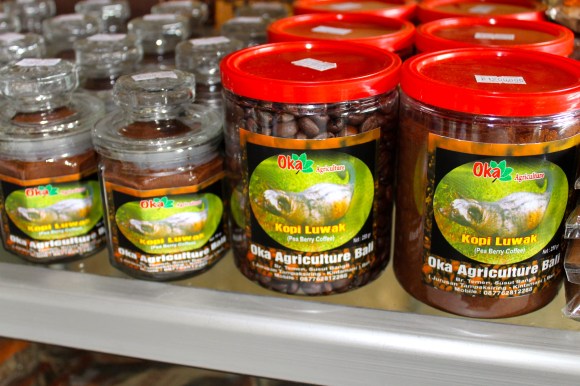
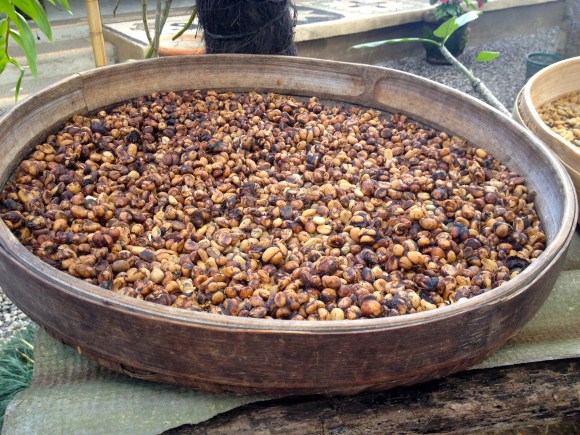
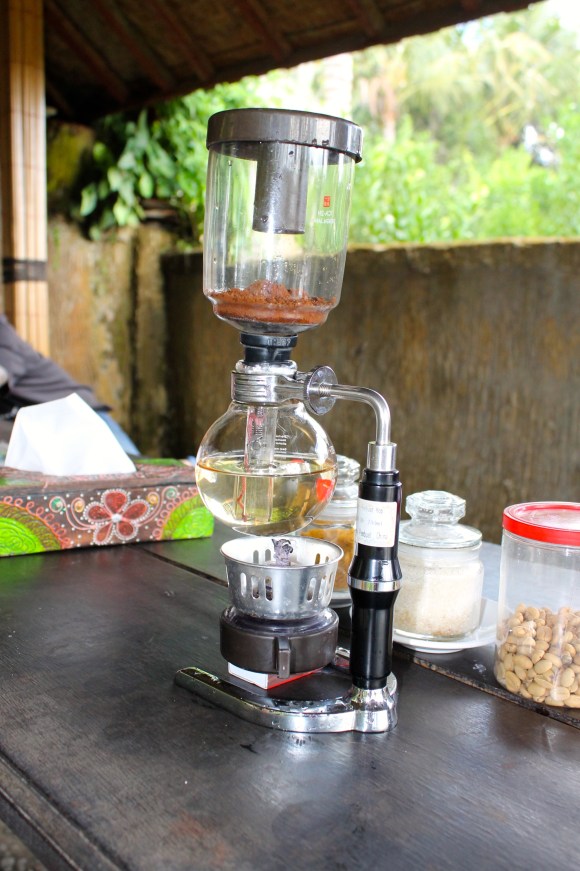
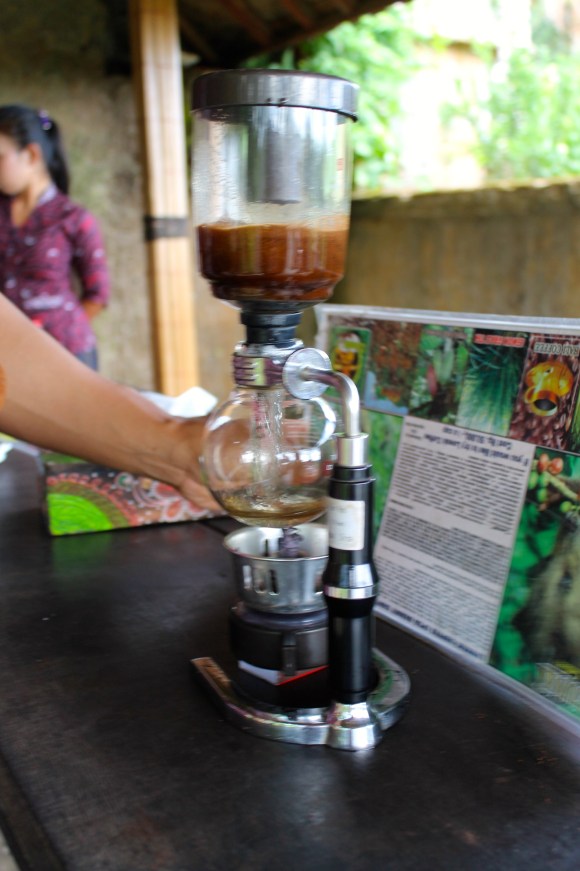

 Make your instant coffee 10 times yummier with this one simple trick
Make your instant coffee 10 times yummier with this one simple trick Treat yourself to a luxury coffee made from a rare bean harvest at Lawson Japan
Treat yourself to a luxury coffee made from a rare bean harvest at Lawson Japan What’s the difference between “The World’s Most Delicious” and “Tastiest” Coffee Jellies?
What’s the difference between “The World’s Most Delicious” and “Tastiest” Coffee Jellies? Japanese cafe lets customers enjoy random flavors of coffee using capsule vending machines
Japanese cafe lets customers enjoy random flavors of coffee using capsule vending machines Could the kind of coffee you drink affect your brain function? New studies say yes
Could the kind of coffee you drink affect your brain function? New studies say yes McDonald’s new Happy Meals offer up cute and practical Sanrio lifestyle goods
McDonald’s new Happy Meals offer up cute and practical Sanrio lifestyle goods All-you-can-drink Starbucks and amazing views part of Tokyo’s new 170 meter-high sky lounge
All-you-can-drink Starbucks and amazing views part of Tokyo’s new 170 meter-high sky lounge More foreign tourists than ever before in history visited Japan last month
More foreign tourists than ever before in history visited Japan last month Beautiful Sailor Moon manhole cover coasters being given out for free by Tokyo tourist center
Beautiful Sailor Moon manhole cover coasters being given out for free by Tokyo tourist center Starbucks reopens at Shibuya Scramble Crossing with new look and design concept
Starbucks reopens at Shibuya Scramble Crossing with new look and design concept Arrest proves a common Japanese saying about apologies and police
Arrest proves a common Japanese saying about apologies and police The oldest tunnel in Japan is believed to be haunted, and strange things happen when we go there
The oldest tunnel in Japan is believed to be haunted, and strange things happen when we go there Studio Ghibli glasses cases let anime characters keep an eye on your spectacles
Studio Ghibli glasses cases let anime characters keep an eye on your spectacles Tokyo luxury hotel offers month-long stays with free breakfasts, might be cheaper than apartment
Tokyo luxury hotel offers month-long stays with free breakfasts, might be cheaper than apartment Disney princesses get official manga makeovers for Manga Princess Cafe opening in Tokyo
Disney princesses get official manga makeovers for Manga Princess Cafe opening in Tokyo We try out “Chan Ramen”, an underground type of ramen popular in the ramen community
We try out “Chan Ramen”, an underground type of ramen popular in the ramen community Beautiful new Final Fantasy T-shirt collection on the way from Uniqlo【Photos】
Beautiful new Final Fantasy T-shirt collection on the way from Uniqlo【Photos】 Foreign English teachers in Japan pick their favorite Japanese-language phrases【Survey】
Foreign English teachers in Japan pick their favorite Japanese-language phrases【Survey】 Is the new Shinkansen Train Desk ticket worth it?
Is the new Shinkansen Train Desk ticket worth it? There’s a park inside Japan where you can also see Japan inside the park
There’s a park inside Japan where you can also see Japan inside the park Japanese convenience store packs a whole bento into an onigiri rice ball
Japanese convenience store packs a whole bento into an onigiri rice ball Studio Ghibli releases Kiki’s Delivery Service chocolate cake pouches in Japan
Studio Ghibli releases Kiki’s Delivery Service chocolate cake pouches in Japan Japan’s bone-breaking and record-breaking roller coaster is permanently shutting down
Japan’s bone-breaking and record-breaking roller coaster is permanently shutting down New definition of “Japanese whiskey” goes into effect to prevent fakes from fooling overseas buyers
New definition of “Japanese whiskey” goes into effect to prevent fakes from fooling overseas buyers Foreign passenger shoves conductor on one of the last full runs for Japan’s Thunderbird train
Foreign passenger shoves conductor on one of the last full runs for Japan’s Thunderbird train Our Japanese reporter visits Costco in the U.S., finds super American and very Japanese things
Our Japanese reporter visits Costco in the U.S., finds super American and very Japanese things Kyoto bans tourists from geisha alleys in Gion, with fines for those who don’t follow rules
Kyoto bans tourists from geisha alleys in Gion, with fines for those who don’t follow rules Studio Ghibli unveils Mother’s Day gift set that captures the love in My Neighbour Totoro
Studio Ghibli unveils Mother’s Day gift set that captures the love in My Neighbour Totoro Domino’s Japan now sells…pizza ears?
Domino’s Japan now sells…pizza ears? New Japanese KitKat flavour stars Sanrio characters, including Hello Kitty
New Japanese KitKat flavour stars Sanrio characters, including Hello Kitty Sales of Japan’s most convenient train ticket/shopping payment cards suspended indefinitely
Sales of Japan’s most convenient train ticket/shopping payment cards suspended indefinitely Sold-out Studio Ghibli desktop humidifiers are back so Totoro can help you through the dry season
Sold-out Studio Ghibli desktop humidifiers are back so Totoro can help you through the dry season Japanese government to make first change to romanization spelling rules since the 1950s
Japanese government to make first change to romanization spelling rules since the 1950s Ghibli founders Toshio Suzuki and Hayao Miyazaki contribute to Japanese whisky Totoro label design
Ghibli founders Toshio Suzuki and Hayao Miyazaki contribute to Japanese whisky Totoro label design Doraemon found buried at sea as scene from 1993 anime becomes real life【Photos】
Doraemon found buried at sea as scene from 1993 anime becomes real life【Photos】 Tokyo’s most famous Starbucks is closed
Tokyo’s most famous Starbucks is closed One Piece characters’ nationalities revealed, but fans have mixed opinions
One Piece characters’ nationalities revealed, but fans have mixed opinions We asked a Uniqlo employee what four things we should buy and their suggestions didn’t disappoint
We asked a Uniqlo employee what four things we should buy and their suggestions didn’t disappoint Princesses, fruits, and blacksmiths: Study reveals the 30 most unusual family names in Japan
Princesses, fruits, and blacksmiths: Study reveals the 30 most unusual family names in Japan Studio Ghibli’s new desktop Howl’s Moving Castle will take your stationery on an adventure
Studio Ghibli’s new desktop Howl’s Moving Castle will take your stationery on an adventure Starbucks Japan kicks off New Starbucks Coffee Journey with unique “white coffee” drinks
Starbucks Japan kicks off New Starbucks Coffee Journey with unique “white coffee” drinks Coffee-infused rice for rice balls and curry? Taste-testing a recipe from Japan’s coffee experts
Coffee-infused rice for rice balls and curry? Taste-testing a recipe from Japan’s coffee experts Italians taste test Japanese canned coffee and tell us what they think【Video】
Italians taste test Japanese canned coffee and tell us what they think【Video】 We try Starbucks Taiwan’s scrumptious mizu manju buns for the Dragon Boat Festival【Taste test】
We try Starbucks Taiwan’s scrumptious mizu manju buns for the Dragon Boat Festival【Taste test】 Starbucks opens its second Roastery, the biggest Starbucks coffee shop yet, in Shanghai
Starbucks opens its second Roastery, the biggest Starbucks coffee shop yet, in Shanghai Starbucks’ retro Japanese kissaten menu debuts deliciously mature coffee gelatin cake【Taste test】
Starbucks’ retro Japanese kissaten menu debuts deliciously mature coffee gelatin cake【Taste test】 Coffee wizard performs snack alchemy in not-so-secret lair
Coffee wizard performs snack alchemy in not-so-secret lair Chilled coffee noodles for dessert are Japan’s newest summertime sweets innovation
Chilled coffee noodles for dessert are Japan’s newest summertime sweets innovation Japanese coffee chain brings in spring with sakura-scented ground and drip coffee
Japanese coffee chain brings in spring with sakura-scented ground and drip coffee The Osaka taste sensation that no one in Osaka has ever heard of: Coffee & Raw Egg 【Taste Test】
The Osaka taste sensation that no one in Osaka has ever heard of: Coffee & Raw Egg 【Taste Test】 Meg tries out Starbucks Japan’s newest treat: the White Brew Coffee and Macadamia Frappuccino
Meg tries out Starbucks Japan’s newest treat: the White Brew Coffee and Macadamia Frappuccino Japanese Internet users show off their myriad coffee filter-based life hacks
Japanese Internet users show off their myriad coffee filter-based life hacks Starbucks comes to Tottori, local coffee chain’s poster compares it to Perry arriving in Japan
Starbucks comes to Tottori, local coffee chain’s poster compares it to Perry arriving in Japan A hidden coffee gem: We indulge in a decadent coffee float at a Starbucks Reserve Bar
A hidden coffee gem: We indulge in a decadent coffee float at a Starbucks Reserve Bar Tanuki magically disguises self as cat to get food
Tanuki magically disguises self as cat to get food
Leave a Reply